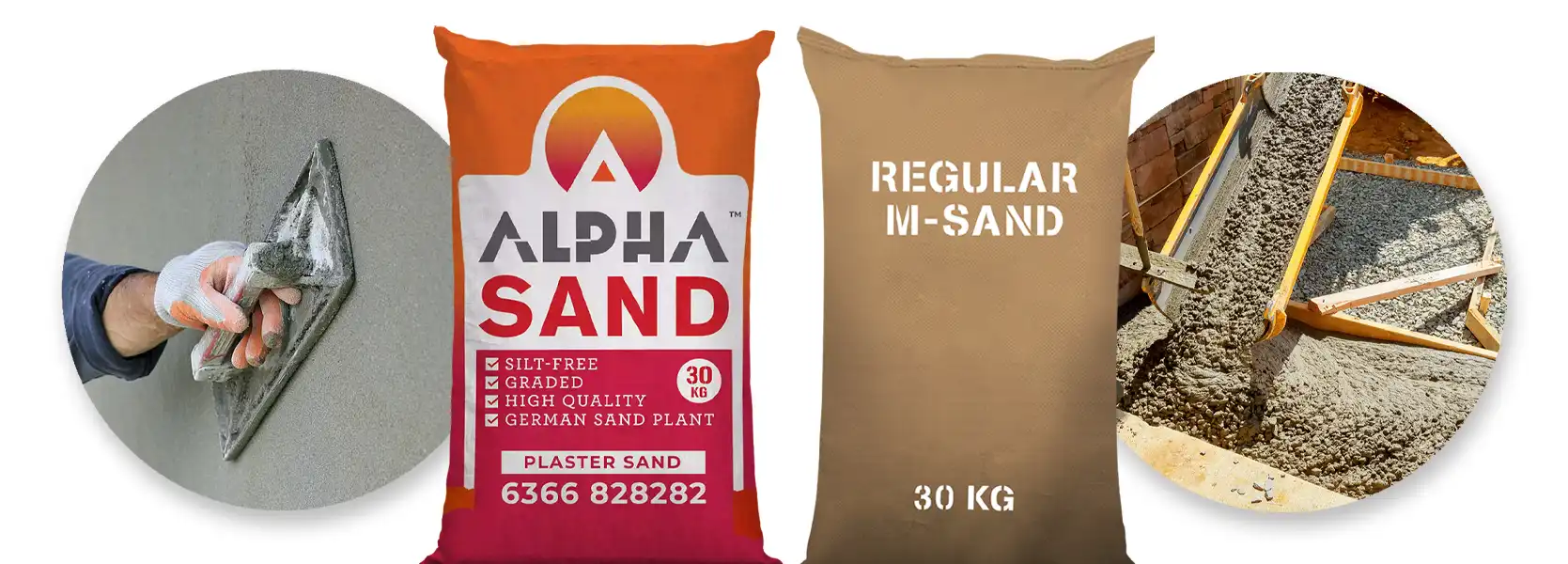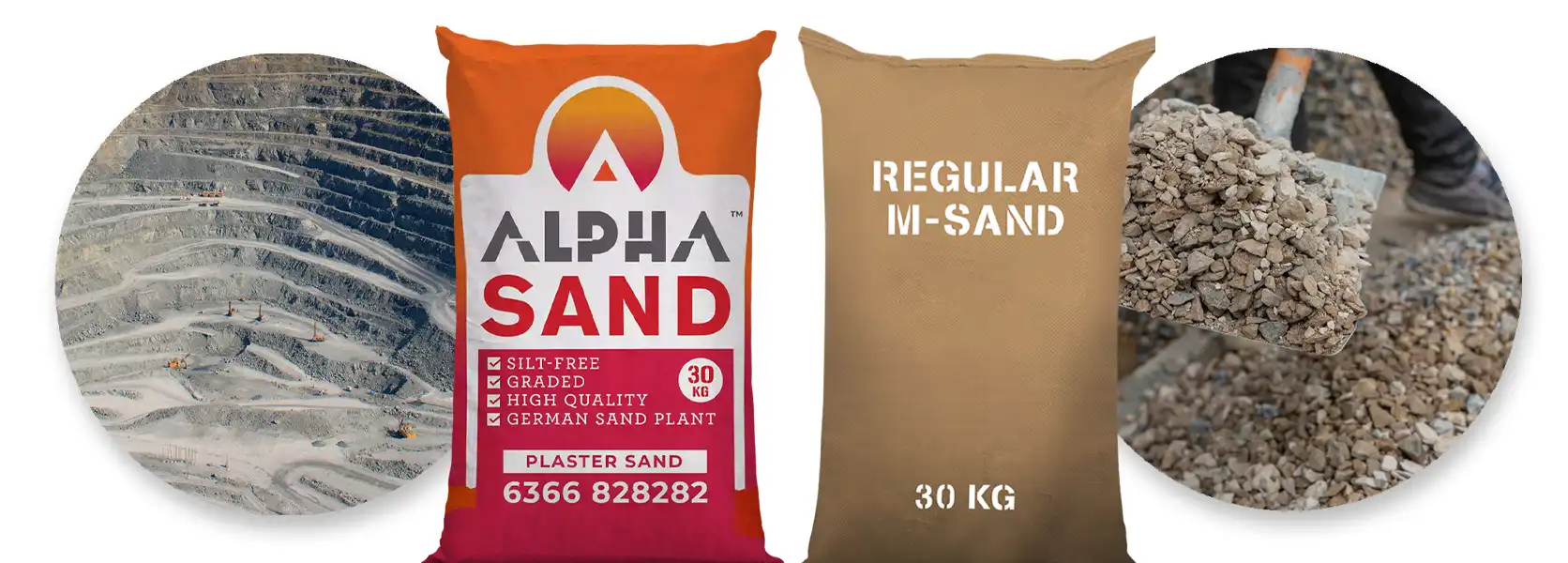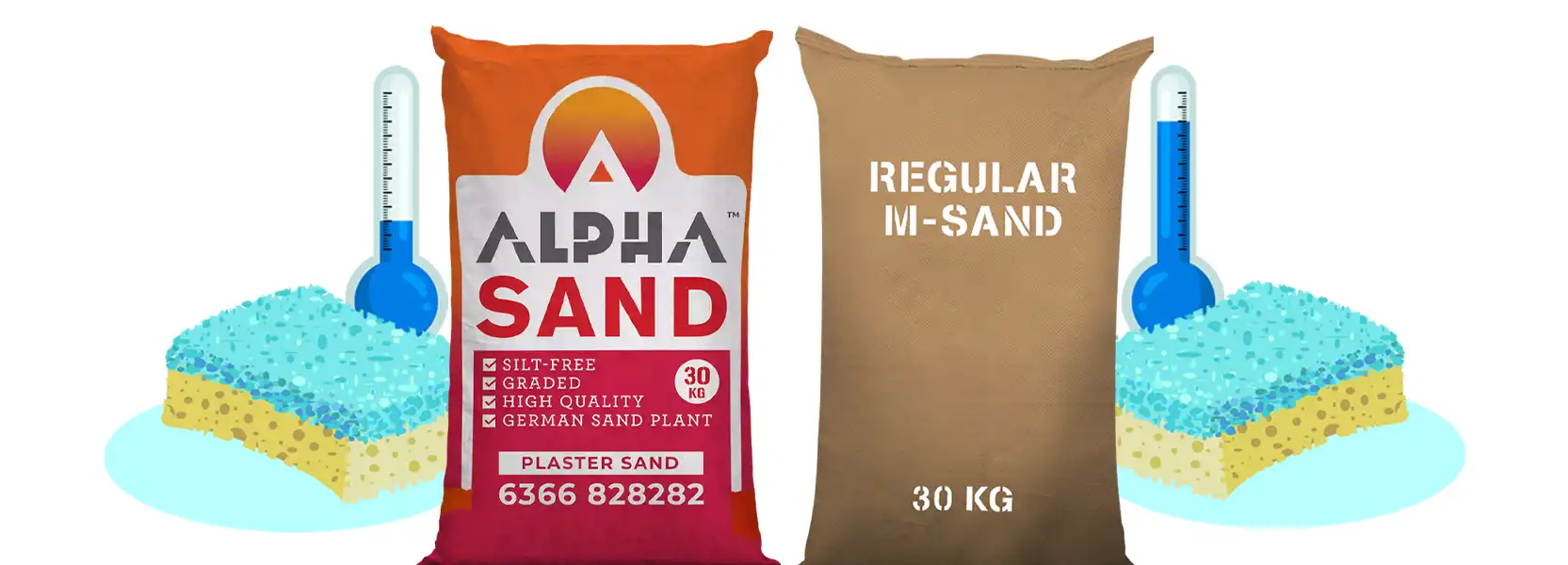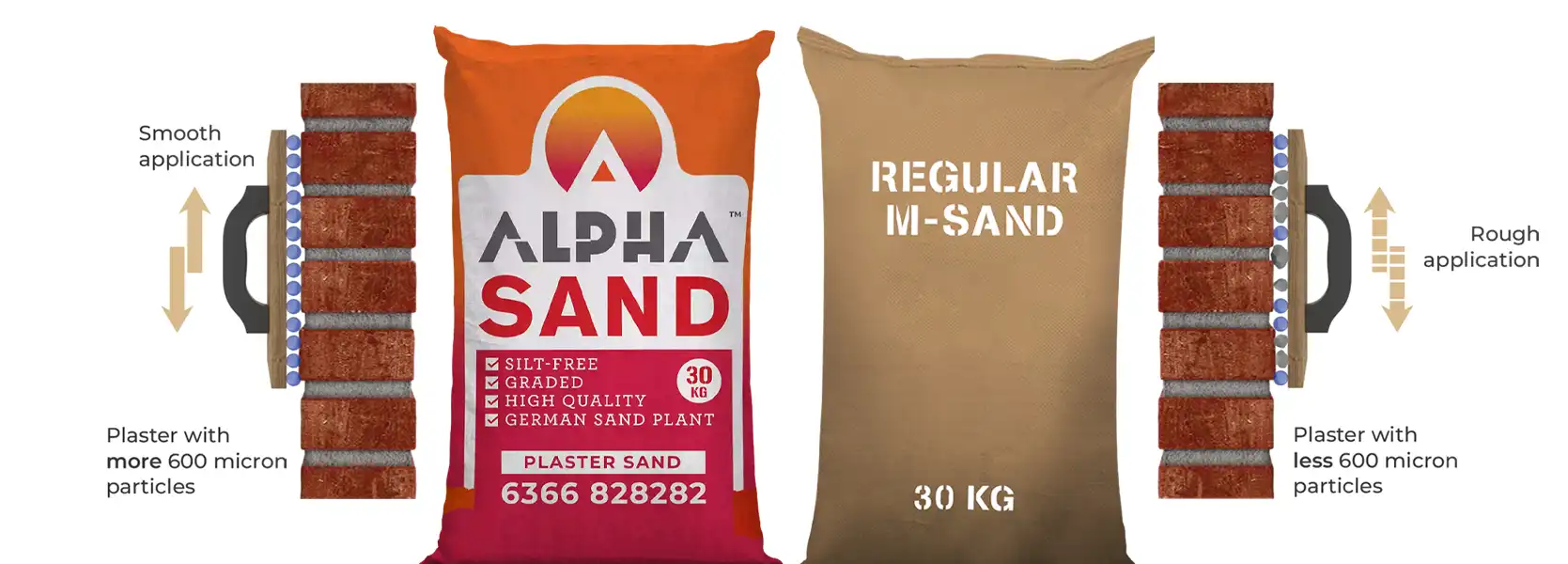
Building materials play an important role in contributing to the longevity and resilience of building structures in the realm of the construction industry. There are two major types of sand used for plastering: P Sand (Plastering Sand) and M Sand (Manufactured Sand). In this article, we will be educating you about their properties, uses, and differences; it will help you make informed decisions for their construction projects.
Clarification of Definitions: What is M Sand and P Sand?

P Sand (also known as Plaster sand or Plastering sand, is meticulously processed for plaster and refined applications. It is essential for achieving a smooth and long-lasting finish on walls and surfaces. On the other hand, M Sand, short for manufactured sand, is made from crushing larger stones into smaller particles serving diverse purposes for construction needs.
Properties of P Sand and M Sand:
P Sand:
Particle Size: According to IS Code 1542, the ideal particle size should be 0.15 mm to 2.36 mm.
Texture: P Sand has a finer and smoother texture when compared to some other types of sand.
Gradation: P Sand is often well graded with the inclusion of 600 microns for the use of plastering.
Water Consumption: Consumes very less water.
Workability: It is well-known for good workability, making it easy to spread and apply during plaster, reducing labor efforts.
Disadvantages of P Sand:
M Sand:
Particle Size: According to IS Code 383:1970 the ideal particle should be 0 mm to 5 mm.
Texture: M Sand has an angular texture due to silt and dust content.
Gradation: M Sand is not finely graded and cannot be used for plastering.
Water Consumption: Consumes more water due to the existence of silt content.
Workability: May require additives for improved workability and rough texture.
Disadvantages of M Sand:
-
It might require additional screening to remove any oversized or undersized particles.
-
It might lack smooth finishing due to the presence of ungraded particles and silt content.
-
M sand causes dampness and cracks in buildings.
| |
M sand
|
P Sand
|
|
Particle Size Range 
|
0 to 4.75 mm
|
0.15mm to 2.36mm
|
|
Usage and Applications
|
Construction projects, concrete, filling voids, foundation for bricks or paving stones
|
Plastering and rendering projects, creating smooth surfaces, improving adhesion
|
|
Availability and Cost

|
Widely available, less expensive than river sand
|
Available in local markets and specialized suppliers, cost varies by location and demand
|
|
Source and Composition
|
Crushed hard stones (granite, basalt) with consistent properties and controlled gradation
|
Found quarries, processed natural sand, finely crushed and graded
|
|
Workability and Finishing
|
It may require additives for improved workability and has a rougher texture
|
Well-known for workability, spreads easily, adheres well for a seamless finish
|
|
Water Absorption and Strength
|
The higher water absorption rate can be adjusted with the water-cement ratio
|
Lower water absorption contributes to the strength and durability of plastered surface
|
Can M Sand be Used for Plastering?

No M sand should not be used for plastering, as M sand contains silt and contains oversized or undersized particles, which causes the following problems:
-
Reduced Adhesion
-
Weakened plaster
-
Surface Cracks
-
Hairline Cracks
-
Map Cracking
-
Corner Cracks
-
Blistering
In Conclusion, P sand is a specialized type of sand that is specifically processed for plastering and rendering works. It has a fine texture and is ideal for creating a smooth, long-lasting surface finish. On the other hand, M sand or manufactured sand is used as a substitute for river sand in a broader range of construction applications. Understanding the differences between P sand and M sand aids in the selection of the appropriate type of sand for specific construction needs, ensuring optimal results in various construction projects.
Frequently Asked Questions:
What is P sand used for?
P sand, also known as plastering sand, is primarily used in construction projects for plastering and finishing. It is a fine aggregate with a smooth texture that aids in the creation of a smooth and even surface for plastering walls and ceilings.
What is meant by M sand and P sand?
M sand is an abbreviation for manufactured sand, which is an alternative to river sand. It is made from hard rocks and has a more uniform particle size than natural sand. Because of its availability, consistent quality, and environmental benefits, M sand is commonly used in construction as a substitute for river sand.
Which size of sand is better for plastering?

Sand with particle sizes ranging from 150 microns to 2.36 millimeters is generally recommended for plastering. This range is also known as "coarse sand" or "plastering sand." It provides an excellent balance of workability and strength in the plaster mix. Sands with finer particles may produce a smoother finish but could be more workable, whereas sands with larger particles may compromise the plaster's strength and cohesiveness. To achieve the best plastering results, choose sand that is free of impurities and has a consistent particle size.